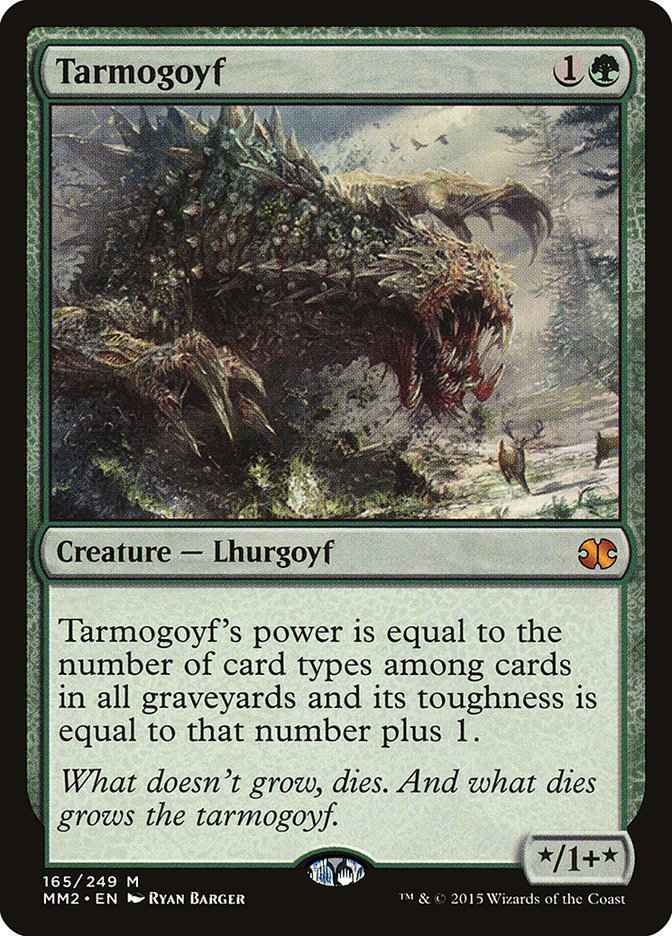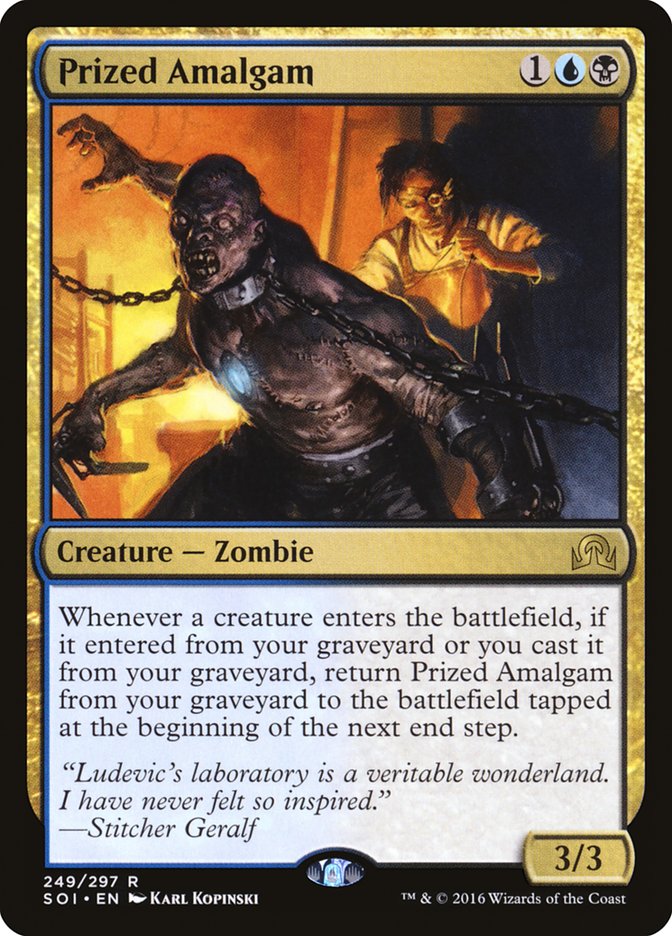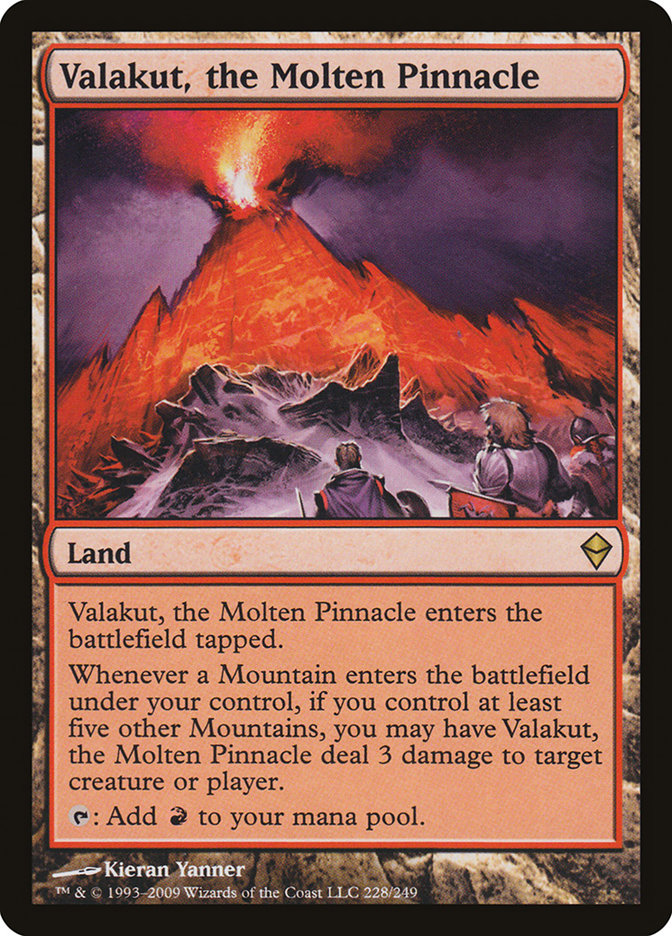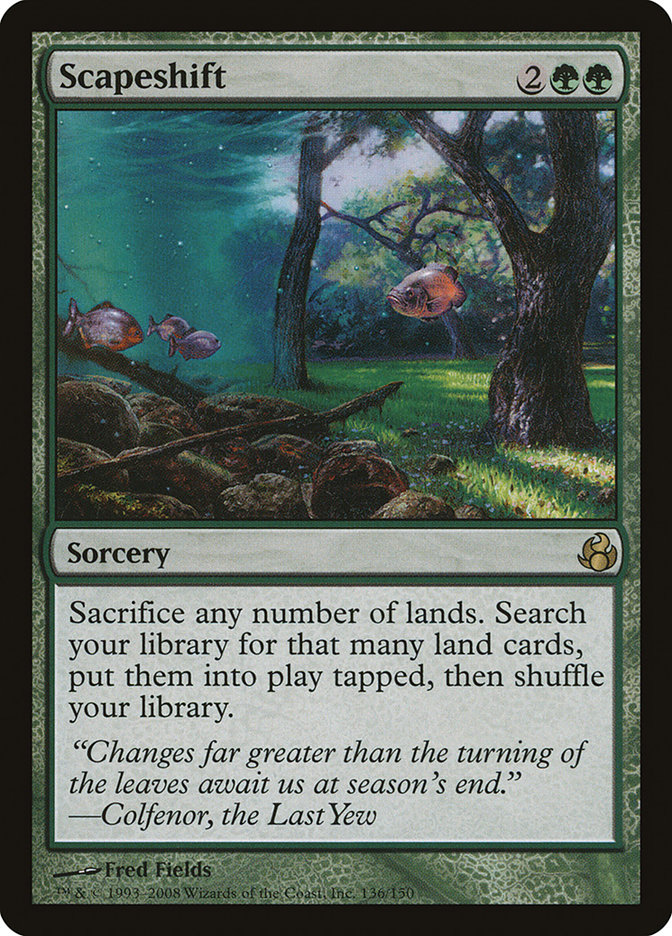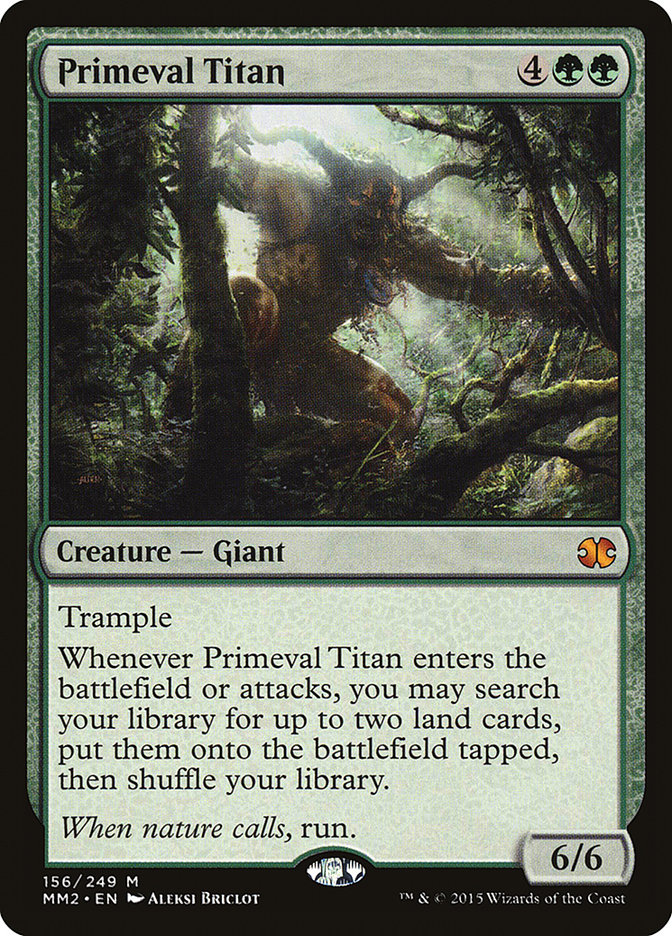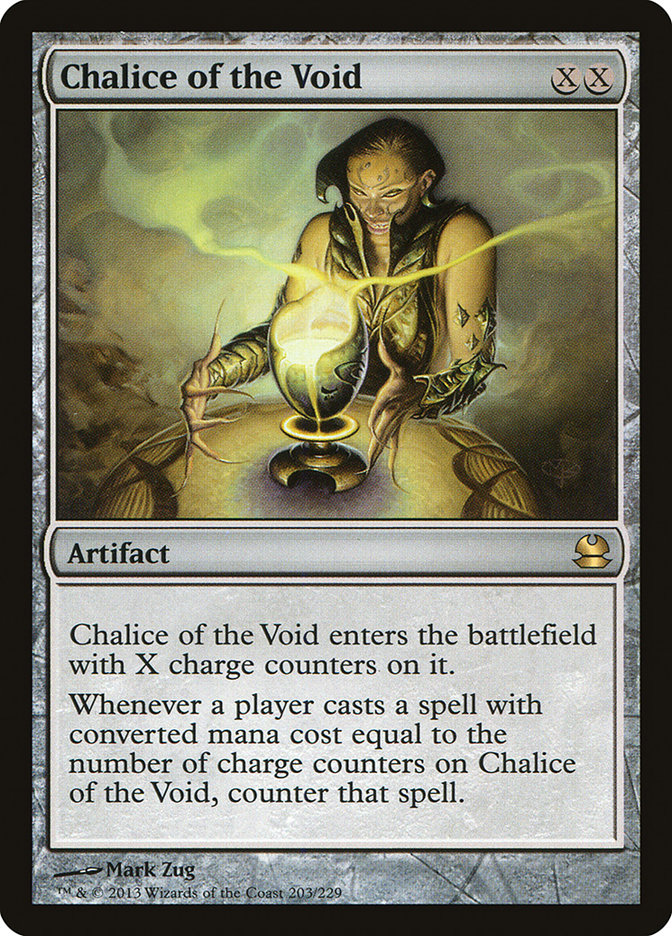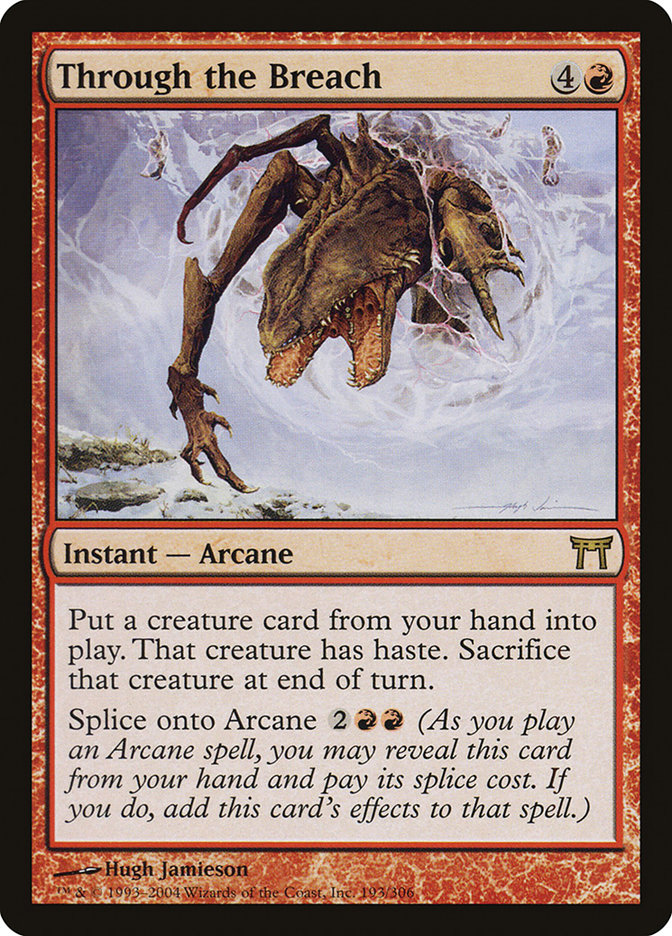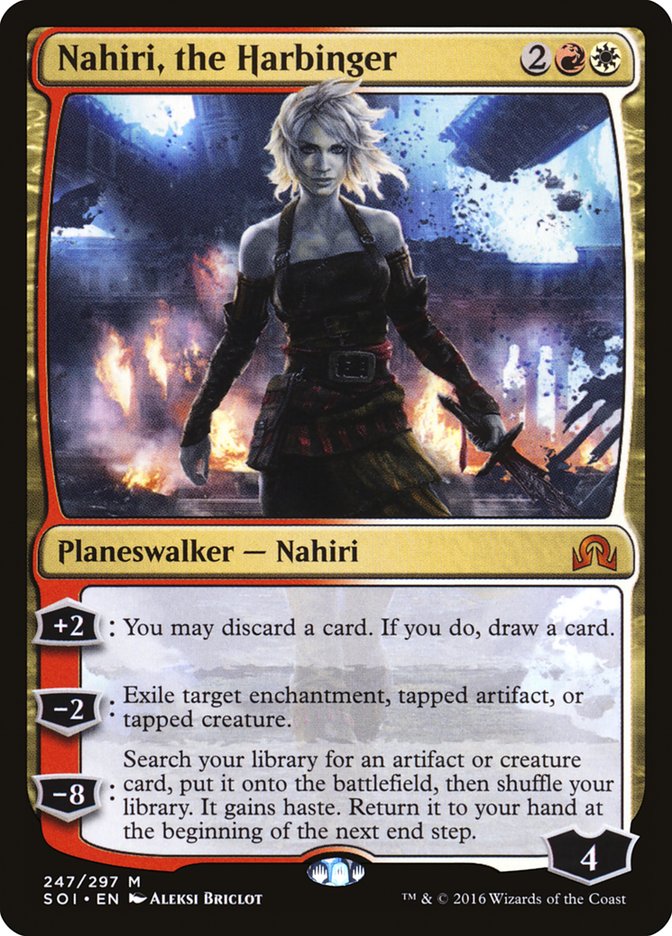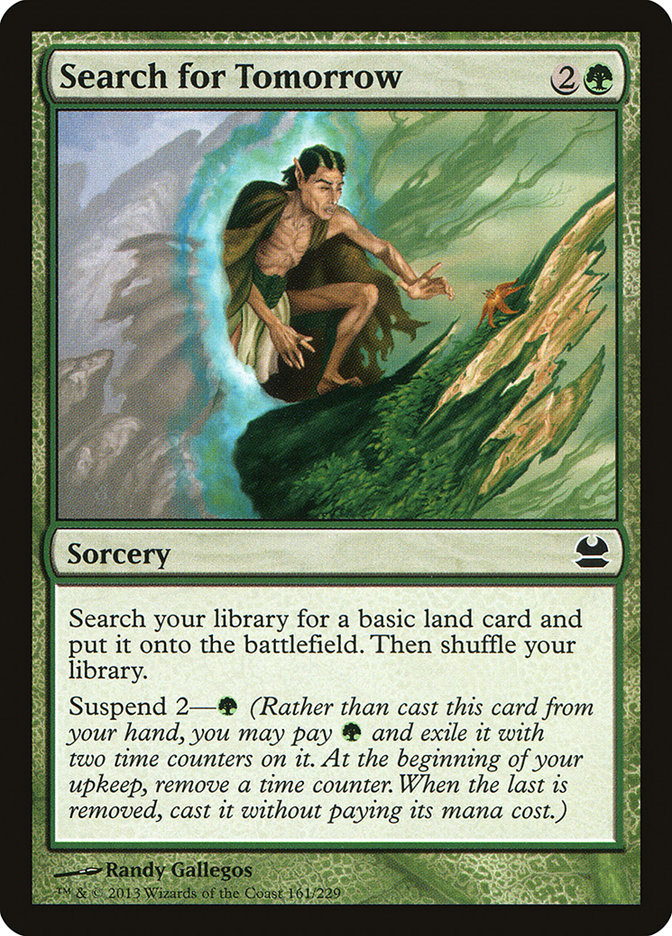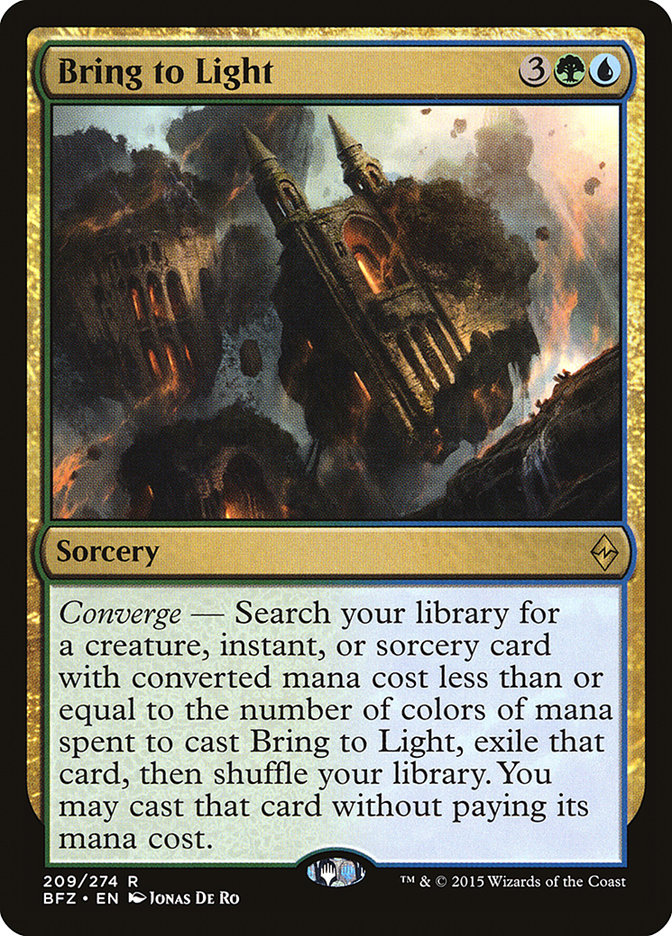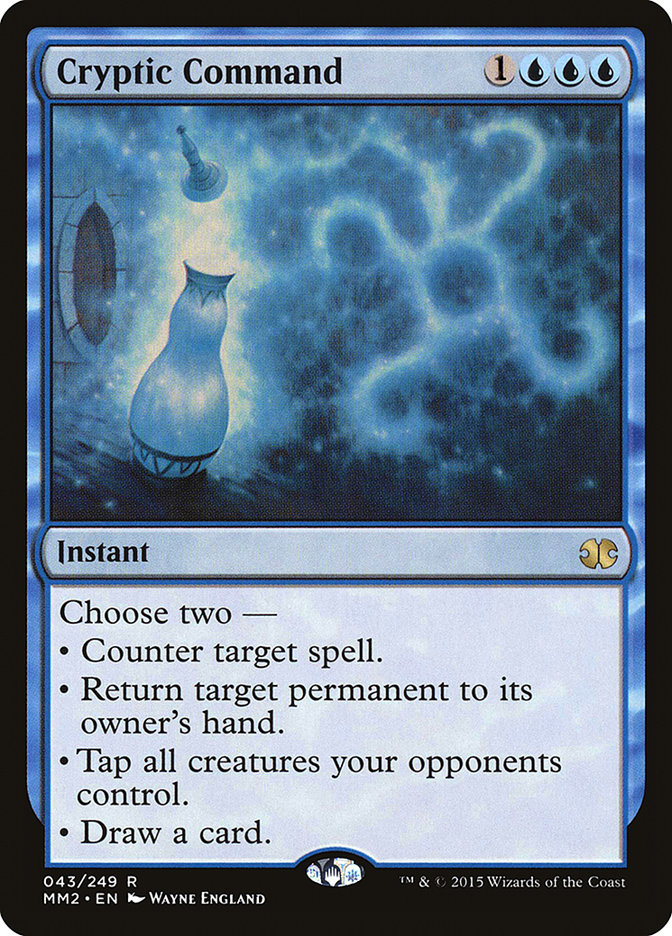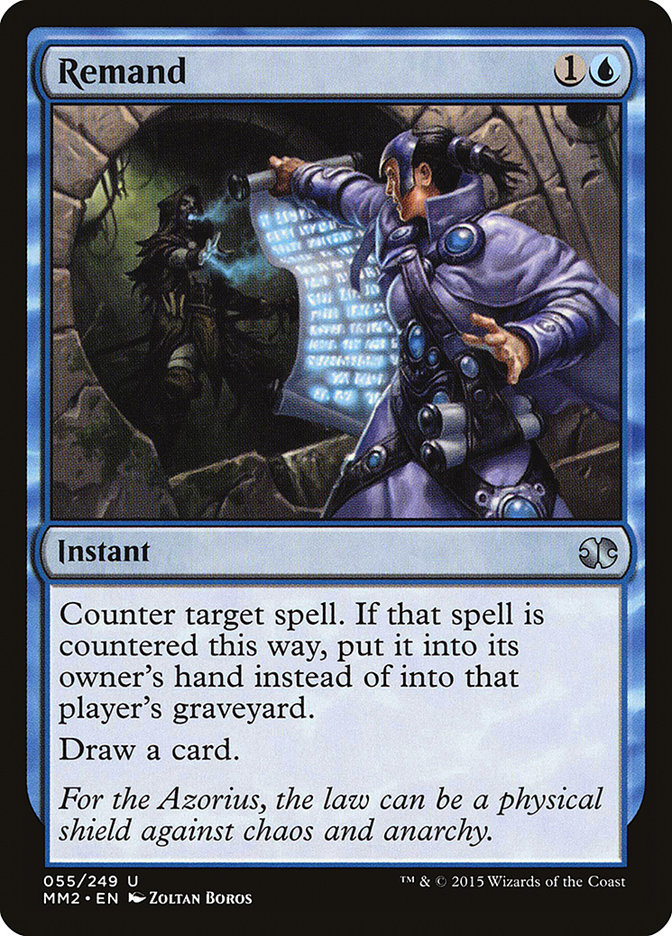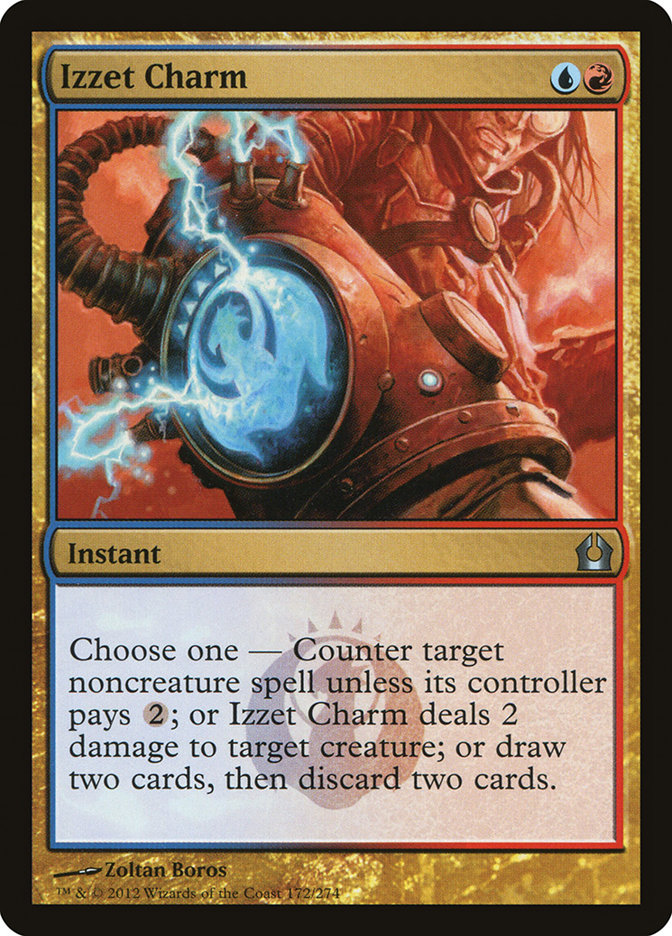After weeks of featuring Standard with Aether Revolt, last weekend was Magic’s first chance to show how the new set will impact Modern. Between two Grand Prix, the Modern portion of the Team Constructed Open, and a gigantic 259-person Modern Classic, there were four significant tournaments worth of results to look through that will certainly form the basis of the Modern metagame moving forward.
The most visible storylines from the weekend revolve around Death’s Shadow and Dredge. Both decks were supposed to take huge steps back from the recent bans and, in the case of the former, the introduction of Fatal Push as a premium removal spell that matches up perfectly against the deck’s threat base. Despite these concerns, retooled versions of these decks were top performers on the weekend, with Dredge taking multiple Top 8 slots in Brisbane and Death’s Shadow taking three of the Top 4 slots in Vancouver, along with the trophy there and in the Team Open.
These are the decks everyone is going to be talking about this week so I wanted to look deeper into the results to find something that may fly under the radar as the news cycle is dominated by the top performers. What I found was a resurgence in decks focused around Valakut, the Molten Pinnacle, which hard largely fallen out of the metagame as the format was too fast for the last year or more.
Valakut, the Molten Pinnacle decks break down into three rough categories: Titan Breach, Titan Scapeshift, and Control Scapeshift. Between those three, they took eleven of the 104 top-finishing spots across the four tournaments last weekend (24 from the Open, 32 from each Grand Prix, and sixteen from the Classic), which means they collectively formed about 10.5% of the winner’s metagame, a significant number in the diverse Modern format.
Before I go into the differences between the three archetypes, I want to discuss their similarities and offer my explanation for why they have experienced a recent resurgence that is likely to continue moving forward.
All of these decks fall into the combo or control-combo category, utilizing Valakut, the Molten Pinnacle and effects that put lands onto the battlefield, from ramp spells like Sakura-Tribe Elder to larger effects like Primeval Titan and Scapeshift. That part I’m sure most of you are quite familiar with, but the implications are important. Valakut, the Molten Pinnacle requires at least seven lands on the battlefield (it and six Mountain) to have an effect, and getting to that number takes significant time.
Therefore, unlike other Modern combo decks that can kill on turn 3 and often kill on turn 4, Valakut decks are looking to kill on turn 4 or 5 and often are slower than that. To compensate for their lack of speed, they maintain a high degree of resilience. Lands are hard to interact with and inevitably you are going to draw enough of them to start throwing Lightning Bolts around like Zeus. Even if your opponent stops the splashy effects from happening, you can win a long game by simply making land drops, which is a powerful form of inevitability.
Of course, the tradeoff between speed and resilience is fundamental to combo decks, as we can clearly see from Legacy, with the spectrum running from All Spells to decks like High Tide. Moreover, it should be clear that combo decks on the resilient end of the spectrum are better in slower, more interactive metagames where their resilience is a benefit and their lack of speed is not punished, while the combo decks at the other end want to play in faster, less interactive metagames where their speed gives them an advantage.
With Modern being so fast last year, Valakut decks were naturally pushed out by faster combo decks. After the bans and the introduction of cards like Fatal Push and Renegade Rallier which are a boon to interactive decks, the format appears to be slowing down, so the “Mountain tribal” strategies are better-positioned.
But Ross, didn’t you say that the big winners from the weekend were Dredge and Death’s Shadow? Those aren’t exactly slow. What gives?
Yes, ominous yet snarky voice that I hope other people can hear too; I did say that. But for one, the speed of Dredge was always overstated. Yes, you could put eleven power onto the battlefield on turn 2 or 3, which would effectively end games against most decks, but you often didn’t finish the game until turn 4 or 5, which is critical against other combo decks. The removal of Golgari Grave-Troll for Golgari Thug only slows the deck down further, and you can see both lists from the Grand Prix stress the Life from the Loam / Conflagrate plan as a means to increase the deck’s resilience to compensate for the decreased speed.
Second, this is not the Death’s Shadow deck of old. Gone are the Become Immenses, and as a result, Temur Battle Rage is down to one to two copies across all the lists. This is not a deck that’s trying to kill you on turn 3. Instead it’s chock-full of cheap disruption and backs it up with efficient threats, akin to Jund. Death’s Shadow is just a great card in combination with fetch- and shocklands.
The success of these archetypes is therefore emblematic of the slowing down of Modern, not evidence to the contrary. With that said, here are my thoughts on the three different Valakut archetypes, specifically focusing on which metagames they are best suited for.
Titan Breach
Creatures (13)
Lands (25)
Spells (22)
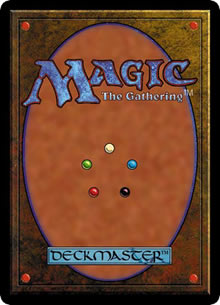
Creatures (13)
Planeswalkers (2)
Lands (25)
Spells (20)

This is the fastest of the three variants, and as such the only one that doesn’t rely on Scapeshift as a primary part of its gameplan. If the card is featured at all, it’s typically as a singleton. Due to its speed, it was also the only of the three decks to see any significant success over the last six months, including some dabbling by yours truly.
The deck regularly casts Primeval Titan on turn 4, which is nearly always a kill on turn 5, but Through the Breach lets you speed up that clock by a turn, often attacking with a Primeval Titan on turn 4. It also enables a nut draw of killing on turn 3, letting the deck compete with other combo decks on pure speed at least often enough that the matchups aren’t lopsided. The addition of Simian Spirit Guide to the archetype serves not only to give another small boost of speed but also enable Chalice of the Void in the sideboard for these other combo matchups.
Chalice of the Void is the exact kind of card you want in these matchups, capable of winning the game by itself against Infect, Burn, Storm, and even Living End. Valakut decks have always needed to devote a large amount of deck space to lands and ramp spells, so the space for disruption is minimal. As a result, you have to make that space count with haymaker effects, and Chalice of the Void is among the best ever printed. Other decks may still play the card, but they certainly won’t be as good at using it as the deck with four Simian Spirit Guides.
The speed of the deck of course comes with a corresponding lack of resilience. Through the Breach introduces a two-card combo aspect to the deck, and without any ways to search for one of the pieces, you’re going to end up with some awkward draws. You also run the risk of having your opponent strip a Primeval Titan or Summoner’s Pact with a discard spell and leave you with a five-mana do-nothing in hand. Drawing multiples of the card only exacerbates the effect as you have no way of looting away superfluous copies.
The second list above, from Chantelle Campbell, tries to compensate for these weaknesses with a splash of white. The maindeck addition Nahiri, the Harbinger serves as a win condition, card selection, a way to get rid of dead copies of Through the Breach, and an answer to annoying creatures and hate cards like Blood Moon or Leyline of Sanctity. That versatility is extremely attractive and the splash is quite easy. You also gain access to more haymaker sideboard cards like Rest in Peace, Stony Silence, and Blessed Alliance against Infect.
The verdict: Of the three, this deck is most suitable for faster metagames, and deciding for or against the white splash is a matter of how prepared your metagame is for the deck. The straight R/G version is more straightforward and streamlined, which is generally how I prefer to build my combo decks, but as the need to have counters for opposing hate increases, the white splash becomes more attractive.
Titan Scapeshift
Creatures (8)
Lands (27)
Spells (25)

Creatures (8)
Lands (27)
Spells (25)

This is the ramp-heaviest of the three archetypes, going as far as to play Khalni Heart Expedition to supercharge the “put lands on the battlefield as quickly as possible” plan. Rather than simply racing to put Primeval Titan onto the battlefield like the previous deck, this one uses Primeval Titan as just another piece of the puzzle, albeit a powerful and important one. But Plan A is to cast Scapeshift with seven or more lands on the battlefield, and this deck can consistently do that on turn 4 or 5.
Unfortunately, the deck’s best openings are just short of casting going off on turn 3. Search for Tomorrow into Khalni Heart Expedition followed by a fetchland on turn 3 leaves you with four lands on the battlefield and a fully charged Expedition, but you’re one land of short of turning on Valakut, the Molten Pinnacle with a Scapeshift.
Similarly, Search for Tomorrow and Sakura-Tribe Elder with an Explore on turn 3 leaves you with four mana to cast Scapeshift but only six lands. Any curve that would give this deck a turn 3 kill would make it clearly the best of the three, although, even as-is, it was certainly the most successful over the span of the four tournaments last weekend.
Its success comes directly from how resilient the deck is, a quality it gains from its redundancy. The lists have ten to eleven haymakers, and even if you devote too many resources to stopping those cards, it is very capable of killing you naturally with Valakut, the Molten Pinnacle. Cards like Courser of Kruphix or Tireless Tracker that you see in this version provide additional resilience in disruption-heavy matchups, letting the deck play a small-ball threat that has to be answered lest it take over the game, thus opening a window to land one of your bigger threats. When unanswered, both let you use your ramp spells to gain velocity and dig toward another Primeval Titan or Scapeshift.
We like to think of blue combo decks being the most resilient because they have the card selection necessary to recover from disruption, but redundancy can provide the same effect for decks without access to much card selection. Slamming threats until they stick is a crude way of getting the job done, but it’s surprisingly effective.
In particular, this method is good at overloading decks reliant on discard spells for disruption. As the adage goes, you can’t Thoughtseize the top of their deck. However, decks that use counterspells are much better-equipped for handling this plan because you’re forced to waste an entire turn casting your big spell into a counterspell, and you can only lose so many turns before your opponent leverages that tempo into a kill.
With Deaths’s Shadow playing the full eight copies of Thoughtseize and Inquisition of Kozilek and other discard-reliant decks like Lantern Control and Abzan making the Top 8 last weekend, it’s pretty clear that this version of the deck is well-positioned. Of the three it’s the one I would recommend going forward, although that status is tenuous. If the format shifts back to being fast and non-interactive, then Through the Breach gets better, and should more counter-heavy decks turn up, the choice shifts to the last of the three archetypes.
Control Scapeshift
Creatures (5)
Lands (27)
Spells (28)

Creatures (5)
Lands (26)
Spells (29)

We started with the most combo-oriented archetype, moved to the most ramp-esque, and now we finish with the most controlling. In fact, these blue-based lists really are control decks that simply leverage how easy it is to incorporate Scapeshift so it can have a clean win condition to end-games once its control of the battlefield is slipping. The fetch- and shockland manabase in Modern makes it possible to play enough Mountains even in a deck that wants primarily blue and green mana.
You have ramp spells so you can threaten a kill as early as turn 4, but the deck is just as happy to play a control game for the first five or six turns of the game and make its land drops naturally. There’s a false tempo aspect going on here where your opponent wants to sequence to minimize the effectiveness of Remand and Cryptic Command but doing so leaves them more vulnerable to Scapeshift, and vice versa.
Bring to Light gives the deck additional versatility in the control plan by opening up the possibility of a toolbox while also serving as additional copies of Scapeshift to allow for more redundancy. The other list, featuring Prismatic Omen, lets the deck go off on six lands since Valakut, the Molten Pinnacle will now count itself as a Mountain, so you gain some speed.
Given that this deck is built as a control-combo deck, I favor the versatility and redundancy over speed. You’re going to use your counterspells and removal to slow the game down to your pace, and you shouldn’t try react to your opponent by playing the game on their terms. If they are too fast for you, then it’s your disruption package that needs to change, not your core gameplan.
What worries me about this deck is the mediocrity of its card selection. It’s mostly reliant on cantrips from Remand and Cryptic Command with some help from Izzet Charm, Worldly Counsel, and potentially Serum Visions. With the lowest threat density of the three decks, it’s going to be the most vulnerable to discard spells stripping away its win condition and forcing it to find another copy of Scapeshift or Bring to Light quickly.
Heavy discard decks also trouble this Scapeshift variant because it’s the worst at putting lands onto the battlefield. It has plenty of deck space devoted to control cards, so if your opponent is able to trade resources repeatedly, you could be left struggling to even turn on your Scapeshift in a relevant time frame.
On the plus side, this deck is very good at fighting through counterspells. The ramp spells ensure you have a mana advantage in the mid-game, which is critical for winning counter wars. Also, the threat of Scapeshift forces your opponent to hold up counterspell mana from turn 4 or 5, hampering their development while you continue ramping and digging until your hand is certain to win: classic false tempo. Since discard spells are played proactively, you don’t gain the same false tempo against them, and if your hand isn’t as strong as you’ve been projecting, your facade will be revealed.
As I noted earlier, the current Modern metagame seems discard-heavy and counter-light, so I wouldn’t recommend this deck right now, although it does have one key point in its favor: it’s great in Scapeshift mirrors. Your counterspells are great against the R/G lists of the deck and you’re only a turn or two slower on average, a gap that is more than bridged by your disruption. The other lists are more focused on their own gameplan and answering cheap threats that can race them and aren’t equipped to beat a control deck that ends the game in one shot while they try to naturally Valakut you to death. If Valakut decks pick up in popularity, this is a good second-level option.
A lot has been said about Modern in the last year. Some players hailed its diversity, while others warned that the multitude of fast, non-interactive decks made that diversity overstated while slower, more interactive decks were forced to the fringe. Banning cards from fast combo decks brings about fears of a format dominated by dopey midrange decks, but with slower, more resilient combo decks like the various flavors of Valakut, the Molten Pinnacle to keep those decks in check, I think we’re heading for a Modern that is just as diverse in terms of archetypes but is similarly diverse in terms of overarching strategies.
I’ll be honest: with the exception of the two weeks I got to prey on unprepared fields with Dredge, I haven’t been a fan of Modern recently. But right now it’s more exciting than it has been in years. So of course the upcoming round of RPTQs is Standard. At least I’ll never run out of complaint equity.


